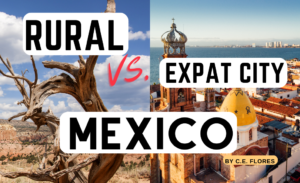7 Key Differences Between Living in the Netherlands and the USA - Only One Thing Surprised Me
Living in the Netherlands - Have You Ever Thought About It?
When comparing life in the Netherlands to the USA, several striking differences emerge. From daily habits to overarching societal norms, these distinctions reveal much about the unique character of each country. Here’s a look at how life in the Netherlands contrasts with life in the USA across various aspects.
1. Daily Walking and Transportation
Netherlands: In the Netherlands, walking and cycling are integral parts of daily life. Cities are designed to accommodate pedestrians and cyclists, with extensive bike lanes and pedestrian-friendly streets. The flat landscape and compact city layouts make cycling a convenient and popular choice for many. Public transportation, including trains, trams, and buses, is highly efficient and widely used.
USA: In contrast, many American cities are designed around car travel. Sprawling suburbs and limited public transportation options make cars almost a necessity in the USA. While some urban areas like New York or San Francisco offer robust public transit systems, many Americans rely heavily on personal vehicles for daily commutes.

2. Cost of Living
Netherlands: The cost of living in the Netherlands can be high, particularly in major cities like Amsterdam. Housing prices are steep, and utilities and groceries can be costly. However, the high cost of living is offset by generous social services, including healthcare and education.
USA: In the USA, the cost of living varies significantly depending on the location. Cities like New York and San Francisco are notoriously expensive, while others, like in the Midwest or South, are more affordable. Healthcare and education costs can be substantial, often requiring private insurance and tuition fees.
| Category | Boston (USD) | Amsterdam (EUR) |
|---|---|---|
| Housing (Monthly Rent for a 1-Bedroom Apartment in City Center) | $3,000 | €1,500 |
| Groceries (Monthly for 1 Person) | $400 | €300 |
| Dining Out (3-Course Meal for 2 People) | $75 | €60 |
| Transportation (Monthly Pass) | $120 | €100 |
| Healthcare (Monthly Health Insurance Premium) | $450 | €150 |
3. Access to Fresh Fruits and Vegetables
Netherlands: Fresh fruits and vegetables are widely available and often locally sourced in the Netherlands. Markets and supermarkets feature a diverse array of produce, reflecting the country’s emphasis on healthy eating. The Dutch also have a strong tradition of seasonal and locally grown foods.
USA: In the USA, access to fresh produce can vary. While major cities offer a wide range of options, rural areas and some urban neighborhoods might have limited access. The rise of farmers’ markets and grocery chains focusing on organic and fresh produce is improving access, but disparities still exist.
4. Individualistic vs. Collective Societies
USA: American society tends to be more individualistic, focusing on personal achievement and self-reliance. While this fosters innovation and entrepreneurship, it also means less emphasis on social safety nets compared to the Netherlands. The American dream often emphasizes personal success and economic mobility.
Note: In the Netherlands, the societal approach is often characterized by a high degree of individualism, with a focus on personal freedom and independence. This contrasts with the communal and collective values observed in many other cultures. In practice, this means that Dutch society highly values personal privacy and autonomy, and people often manage their own affairs with minimal interference. However, it’s worth noting that while the Netherlands promotes individual rights, it also maintains strong social support systems and a sense of communal responsibility, blending individualism with social care. This nuanced balance can sometimes lead to different interpretations of individualism compared to the more pronounced individualistic tendencies seen in other cultures.
5. Languages
Netherlands: Dutch is the official language of the Netherlands, but English is widely spoken. Many Dutch people are multilingual, with fluency in German and French being common. The prevalence of English in education and daily life makes it easier for expatriates to adapt.
USA: English is the primary language in the USA, with Spanish being the second most commonly spoken language. The diversity of the American population means a variety of languages are spoken, but English remains dominant in public life and services.
When I was in the Netherlands, most people would speak to me in Dutch, then I would respond in English. Some things I could understand through context. As always when traveling to a new place, it’s important to learn basic phrases in the main language of the country.
6. Companies and Corporate Life
Netherlands: The corporate culture in the Netherlands is characterized by a flat hierarchy and a strong emphasis on work-life balance. Dutch companies value transparency and egalitarianism, fostering open communication and collaborative work environments.
USA: In contrast, American corporate life often features more hierarchical structures with a focus on individual achievement and competition. The work culture can be more demanding, with long hours and a greater emphasis on performance metrics and results.
7. Influx of Foreigners and Multiculturalism
Netherlands: The Netherlands is known for its multicultural society, with a significant influx of immigrants from various parts of the world. The Dutch embrace diversity and integrate various cultural influences into their society, though challenges remain in achieving full integration.
USA: The USA is a “melting pot” of cultures, with a long history of immigration shaping its demographic and cultural landscape. The country continues to experience significant influxes of foreigners, contributing to its dynamic and diverse society. This diversity is reflected in various aspects of American culture, from cuisine to festivals.
In summary, while the Netherlands and the USA each offer distinct living experiences, their differences in daily habits, cost of living, and societal norms highlight the unique characteristics of each country. Whether you’re considering a move or just curious about life abroad, understanding these contrasts can provide valuable insights into the diverse ways people live around the world.
living in the netherlands living in the netherlands living in the netherlands living in the netherlands living in the netherlands living in the netherlands living in the netherlands living in the netherlands









